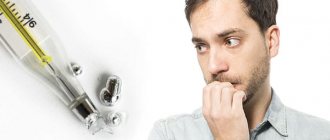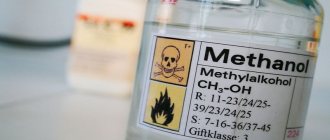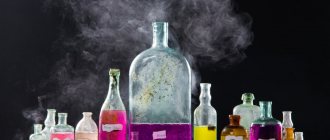Classification of microbes that cause infectious diseases
Microbiology divides all microorganisms that are pathogenic into several varieties:
Bacteria are single-celled microorganisms. In microbiology, they are quite well studied, and certain types are distinguished, differing in their structure:
- Cocci are spherical pathogenic microorganisms. They can exist alone, in pairs, and even in entire colonies. These include staphylococci, streptococci, diplococci.
- The bacilli are rod-shaped, and under a microscope it is quite easy to distinguish them from other species. They are very widespread in nature and have a strong pathogenic effect. They play the role of causative agents of diseases such as diphtheria, tuberculosis and tetanus.
- Spirilla are pathogenic bacteria with a tortuous shape, similar to a spiral. They cause leptospirosis and syphilis.
All microorganisms are also distinguished by the respiratory factor. They can be:
- aerobic, for which the presence of oxygen in the environment is very important;
- anaerobic, which, on the contrary, require the absence of oxygen for reproduction and growth.
Some representatives of pathogenic bacteria have the ability to form capsules. They use their outer shell for this. Pathogenic microorganisms are capable of forming capsules only when they are inside the host’s body. The role of the carrier can be played by animals or humans. The formation of capsules occurs when the bacteria is in danger. Capsules make the microorganism immune to the effects of antibodies, which prevents it from dying under unfavorable conditions. When the danger has passed, the capsules dissolve and the bacteria continue their harmful activities.
Rickettsia are pathogenic microbes that in microbiology occupy an intermediate level between bacteria and viruses. Most often, these tiny microbes are carried by fleas and ticks. They are the causative agents of typhus, Rocky Mountain fever, Q fever and many other diseases called rickettsial diseases.
Viruses are the smallest microorganisms that parasitize inside host cells. They have the ability to remain in the body for a long time in a latent state, a kind of “hibernation”. When the immune system is weakened by any factors, viruses quickly emerge from suspended animation and attack living cells, causing symptoms of the disease.
Treatment of viral diseases is a long and complex process. Modern microbiology and genomics of pathogenic bacteria and viruses make it possible to study microorganisms as deeply as possible and find new methods for treating lesions, as well as ways to prevent infections.
To protect yourself from diseases associated with the activity of pathogenic microorganisms, it is enough to follow basic hygiene rules and get vaccinated in a timely manner. There is a certain list of vaccinations that children and adults need to do at a certain age. Also, when traveling on vacation to exotic countries, it is necessary to be vaccinated against local diseases. Each country has its own list of such diseases. To provide yourself and your loved ones with peace of mind about your health, it is important not to neglect these simple rules.
Copywriter. I have been writing articles since 2013. Considerable experience in “feminine” themes and interior design. In addition to this, I write on many other topics.
How do harmful bacteria get in?
Pathogenic microorganisms use parasitism as their main method of survival.
The essence of parasitism is the use of the compounds they need from the living cells of the host - a person. However, in the process of evolution, the human body has created many protective functions.
It is important to remember that:
- a pathogenic microorganism is a microorganism that has the potential to cause disease;
- infection is the invasion and proliferation of pathogenic microbes in an individual or population;
- disease is when an infection causes damage to a person’s vital functions or systems;
- infection does not always lead to disease!
To cause an infection, harmful cells must enter our body. Pathogens can enter the body through four places listed below:
- respiratory tract (mouth and nose) such as the influenza virus that causes the flu;
- gastrointestinal tract (oral cavity), for example, causing cholera;
- urogenital tract, for example, E. coli which causes cystitis;
- cuts on the surface of the skin, such as clostridia, which causes tetanus.
In order for pathogenic microorganisms to cause harm to the body and a person to become ill, the bacteria must:
- reach your target place in the body;
- attach to the target location they are trying to infect;
- multiply quickly;
- receive nutrients from the host;
- avoid and survive attack by the host's immune system.
Infection can be thought of as a battle between invading pathogens and the host. Our bodies are equipped to fight off invading germs that can cause illness. This is called our natural defense.
Stages of poisoning
Acute intoxication can occur in 2 main stages.
- Toxigenic. It begins to develop immediately after a pathogenic substance enters the body. The toxin begins to influence chemical compounds and destroy them, to which the body reacts violently. The toxicogenic stage lasts until the poison is absorbed into vital tissues.
- Somatogenic. It begins after the harmful substance has already broken down and provoked specific complications in the body.
The toxicogenic stage of poisoning is the entry of harmful substances into the body
The body's second line of defense
If microbes still manage to get inside the body, then the second line of defense is activated. It is also a nonspecific barrier in the blood that stops many types of pathogenic microorganisms.
Phagocytes are a type of white blood cell that move through amoeboid action. They form cytoplasmic projections that allow them to surround invading bacteria and engulf them. Phagocytes release digestive enzymes that destroy surrounded microbes before they can do any harm. This process is called phagocytosis.
Which doctor should I contact?
The specialist who makes the initial diagnosis is the therapist. The doctor collects anamnesis based on the patient’s symptoms and complaints.
Next, the need to consult a highly specialized doctor is determined:
- infectious disease specialist;
- gastroenterologist;
- resuscitator (in case of severe or extremely severe poisoning);
- toxicologist (for radiation exposure or consumption of products with radionuclides).
For mild intoxication, an examination by a physician is sufficient. If the patient is unconscious or in serious condition, you should not wait for a doctor, you need to call an ambulance and take the patient to intensive care.
Pathogenic bacteria
Pathogenic bacteria are bacteria that can cause infection. Most bacteria are harmless or even beneficial, but some are pathogenic. One high-burden bacterial disease is tuberculosis, caused by the bacterium Mycobacterium tuberculosis, which kills about 2 million people per year, mainly in sub-Saharan Africa. Pathogenic bacteria contribute to the development of other globally significant diseases such as pneumonia, which can be caused by bacteria such as Streptococcus and Pseudomonas, and foodborne illnesses, which can be caused by bacteria such as Shigella, Campylobacter and Salmonella. Pathogenic bacteria also cause infections such as tetanus, typhoid fever, diphtheria, syphilis and leprosy. Pathogenic bacteria are also responsible for high infant mortality rates in developing countries. 1) Koch's postulates are the standard establishing the relationship between the causative microbe and the disease.
Ways pathogenic microbes enter the human body
There are several possible options for how pathogenic viruses and bacteria can enter the host. The places through which they entered the body are called the entry gates of infection. There are four methods of infection.
- Food poisoning. They occur when toxins produced by pathogenic microorganisms enter the gastrointestinal tract along with food. Such an infection does not spread from person to person, but if a large amount of food has been contaminated, then many people can get sick at the same time. Often the root cause of such an outbreak is the spread of Staphylococcus aureus on the skin of people involved in food preparation.
- Intestinal infections. This bacterial infection occurs when drinking contaminated water and food. Very often, it can be carried by ordinary house flies, so it is important to ensure that these insects do not land on food. They differ from food poisoning by the presence of a living pathogen, and not just its waste products.
- Pathogenic microorganisms can also enter through the respiratory tract. This occurs when a carrier of an infectious disease sneezes or coughs. Live pathogenic microbes enter the body of a healthy person and very quickly begin their pathogenic activity. Diseases transmitted through the respiratory tract include tuberculosis, meningitis, streptococcal infections, diphtheria, and pneumonia.
- Many pathogenic bacteria are carried by small rodents and insects. In most cases, microorganisms do not infect the host, but only live on it temporarily. These microbes include pathogenic bacteria that cause typhus, plague, tularemia, and various forms of fever.
By reason and place of occurrence
This classification is often used by forensic doctors. Based on the cause and location of occurrence, all cases of poisoning are divided into two large groups.
Random
Occur without special intent: due to careless behavior, violation or ignorance of safety rules, or lack of awareness of the patient about a possible threat. They include the following types of poisoning:
Production. They develop under the influence of toxic substances used by employees of industrial enterprises or research centers. In most cases, they occur due to violation of safety regulations.
Household. The category includes alcohol and drug intoxication, drug overdose, incorrect use of medications during self-medication, and carbon monoxide poisoning.
Iatrogenic or medical errors. Occurs in both inpatient and outpatient settings. They develop due to incorrect dosage, method of administration of the drug, or erroneous diagnosis.
Deliberate
Occur with the purpose of deliberately causing harm. In this case, the culprit of the poisoning may not fully understand the consequences of his action. It is customary to divide these cases of intoxication into 4 groups:
- Criminal. Includes cases of intentional poisoning of a third party or rendering him helpless.
- Suicidal. Committed for the purpose of suicide, as well as simulation of suicide (demonstrative poisoning).
- Policemen. Occurs when protesters are dispersed using tear gas or similar poisons.
- Combat. They develop when exposed to chemical weapons.
The body's first line of defense
The body's first line of defense against bacteria is nonspecific and aims to prevent pathogens from entering the body. The skin and mucous membranes act as a physical barrier that prevents the penetration of harmful microbes.
If the skin is cut, the blood forms a clot that closes the wound and prevents germs from entering.
The surfaces of the body - the skin, digestive system and the inside of the nose - are covered with a community of microorganisms called normal body flora. They help protect the host from infection by more harmful microorganisms by acting as a physical barrier. Normal body flora colonizes protective surfaces and reduces the area accessible to pathogens. This also means that harmful microbes must compete with the body's normal flora for nutrients without causing an eating disorder.
The human midgut contains about 1 kg of these beneficial bacteria, which is equivalent in grains to one large bag of sugar.
The respiratory system—the nose and passages leading to the lungs are lined with cells that produce a sticky fluid called mucus that traps invading pathogens and dust. Tiny hairs called cilia move in a wave-like motion and carry germs and dust particles down to the throat, where they are either coughed out, sneezed, or swallowed, and then carried out of the body through feces.
The body produces several antimicrobial substances that kill or stop pathogenic microorganisms from growing. For example, enzymes in tears and saliva break down bacteria.
The stomach produces acid that destroys many bacteria that enter the body through food and drink.
Urine, as it passes through the urinary system, releases harmful bacteria from the bladder and urethra.
Concept of pathogenic microorganisms and infection
Some human diseases are associated with the impact of microbes on the body. When such diseases occur, complex changes occur in the human body, and protective functions are mobilized to combat the invading microbes.
Among the huge number of microorganisms, there are those that can cause diseases in humans, animals and plants. They are called pathogenic or pathogenic. Pathogenic microorganisms are characterized by specificity - each type is capable of causing only a specific disease with all its characteristic signs. Most pathogenic microorganisms are parasitic microbes, since they are able to live off the substances of a living organism.
Pathogenic microbes produce special substances - toxins that poison the body and cause a painful condition. The ability of microorganisms to cause disease is called pathogenicity. It can manifest itself to varying degrees. The degree of pathogenicity is called virulence. The virulence of microbes can increase or decrease under both natural and experimental conditions.
Under the term " infection"
» understand the process of interaction of microbes with the human body, which results in an infectious disease. Sources of infection are, first of all, sick people and animals that release pathogenic microorganisms into the external environment, as well as recovered people and animals, in whose bodies pathogenic microbes continue to remain for some time (sometimes for a very long time) after recovery. People and animals that excrete pathogenic microbes after recovery are called bacteria carriers or bacteria excretors. People who have not been sick can also be carriers of the bacteria. Pathogenic microbes released by a sick body enter the air, soil, water, surrounding objects and food, where they can remain viable for a more or less long time, depending on the type of microbe.
Pathogenic microbes enter the human body in various ways: through direct contact with a sick person—through the air with tiny droplets of mucus and saliva secreted by the patient when coughing or sneezing (droplet infection). Microbes - the causative agents of certain diseases - are excreted by patients in feces and urine. Such microbes enter the body of a healthy person through dirty hands that are not washed after using the toilet. From contaminated hands, pathogenic microorganisms also transfer to food products. Causative agents of intestinal infections penetrate into a healthy body also when drinking contaminated water.
Insects and rodents are often carriers of infectious diseases. Flies can carry pathogens of typhoid fever and dysentery, lice - typhus, some types of mosquitoes - malaria, etc. Mice and rats are carriers of pathogens of plague, tularemia, and anthrax.
The penetration of pathogenic microbes into the human body does not always lead to illness. In the occurrence and course of the disease, an important role is played by the properties of pathogenic microbes that have penetrated the body, their number and activity, as well as the place of their introduction into the body and the state of the body itself.
For the proliferation of pathogenic microorganisms, favorable conditions are needed, and they appear when the human body is weakened and its protective ability is reduced (due to hypothermia, starvation, etc.). Susceptibility to infections also depends on age (in children and the elderly it is higher than in adults).
From the moment pathogenic microbes enter the human body until signs of illness appear, a certain period of time usually passes - called the latent period of the disease, or incubation. During this time, pathogenic microbes multiply in the body and harmful products of their vital activity accumulate. The incubation period for different diseases varies. It ranges from several days (influenza, tetanus, dysentery) to several weeks (typhoid fever, typhoid fever), and sometimes reaches several months (rabies) and even years (leprosy).
If you find an error, please select a piece of text and press Ctrl+Enter.
By severity
All cases of poisoning are divided into 3 categories:
- Lungs. They are characterized by the absence of symptoms and do not pose a significant threat to the health and life of the victim. Mild intoxication can usually be treated at home. It does not cause complications, the consequences of contact with the poison disappear on their own within a few days.
- Moderate weight. Characterized by severe or persistent symptoms and require medical attention.
- Heavy. They are distinguished by severe or life-threatening symptoms: the effect of the poison affects the functioning of the heart, brain, and liver.
The severity of intoxication depends on the amount of poison taken and the individual characteristics of the patient.
What are pathogenic microbes
Every person has encountered an infectious disease at least once in their life. These lesions manifest themselves with various symptoms, but they all have one root cause - pathogenic bacteria, fungi and viruses. To understand how to avoid infection or speed up treatment of an existing disease, you need to understand the nature of these microbes.
Pathogenic bacteria actively develop not only in the body of humans and other animals. They often even infect plant tissue. Many pathogenic microbes have the ability to seriously reduce the natural protective properties of the body, as a result of which it becomes more susceptible to other environmental influences. There are many types of such microorganisms, each of which causes a specific disease. Its severity depends on several main factors:
- pathogenicity and virulence of the microbe;
- the conditions in which the body is located;
- state of the macroorganism (that is, the carrier).
The pathogenicity of microorganisms is their ability to provoke the development of a certain disease. Pathogenicity is the main property of all pathogenic microbes. All pathogenic bacteria cause the appearance of certain symptoms in the host’s body. Each disease is inherent in a specific type of pathogenic microorganism; no other type can cause the same damage.
Within each species, there is also a division of bacteria and viruses into strains that have varying degrees of pathogenicity. They provoke the appearance of similar symptoms, but differ in intensity. This indicator is called virulence, and it can be changed under the influence of certain factors. Modern treatment is aimed at eliminating this property of pathogenic microorganisms.
In addition to their main action, many microbes, during their life processes, release toxins that significantly weaken the host’s body. Toxic substances produced by pathogenic bacteria negatively affect the immune system and seriously weaken it. In this regard, the symptoms of the disease intensify, and the person becomes more susceptible to external influences.
To become infected with an infectious disease caused by pathogenic microorganisms, it is enough for a minimum amount of pathogens to enter the body. How quickly the first signs of damage appear depends on the type of microorganism and the method of its penetration into the host. The period of time between the pathogen entering the body and the appearance of the first symptoms is usually called the incubation period.
By the nature of exposure to toxins
Classification of poisonings is needed not only for official medical reporting. It helps doctors in diagnosis: the clinical picture characteristic of certain types of intoxication allows them to choose a treatment regimen. Knowing what kinds of poisonings there are can be useful not only to a medical specialist, but also to any ordinary person.
Based on the nature of the effects of toxic substances, they are divided into the following categories:
- Spicy. Occurs with a short, single exposure to a toxic substance. Acute forms of intoxication are characterized by an abrupt onset and pronounced symptoms.
- Subacute. They develop through repeated contact with the poison. They differ from the acute form by less pronounced signs of intoxication.
- Super sharp. Characterized by damage to the nervous system. They require an immediate call to a doctor and provision of first aid. Without proper treatment and use of an antidote, they lead to death within 2–3 hours.
- Chronic. They develop with regular, intermittent exposure to subtoxic doses of poison. Lead to the accumulation of harmful chemical compounds in tissues.
Diseases
Each type of bacteria exhibits a specific effect and causes symptoms in infected people. Some, or even most, people infected with pathogenic bacteria have no symptoms. People with weakened immune systems are more susceptible to pathogenic bacteria.
Pathogenic susceptibility
Some pathogenic bacteria cause illness under certain conditions, such as when they enter the skin through a cut, during sexual activity, or when immune function is weakened. Streptococcus and Staphylococcus bacteria are part of the normal flora of the skin and are usually present in healthy skin or in the nasopharyngeal area. However, these species have the potential to initiate skin infections. They can also cause sepsis, pneumonia and meningitis. These infections can become quite serious and provoke a systemic inflammatory response, leading to severe vasodilation, shock, and death. 2) Other bacteria are opportunistic pathogens and cause disease mainly in people suffering from immunosuppression or cystic fibrosis. Examples of these opportunistic pathogens include Pseudomonas aeruginosa, Burkholderia cenocepacia, and Mycobacterium avium.
Intracellular parasites
Obligate intracellular parasites (eg, Chlamydophila, Ehrlichia, Rickettsia) can only grow and reproduce inside other cells. Even these intracellular infections may be asymptomatic, requiring an incubation period. An example is Rickettsia, which causes typhus. Another bacterium causes Rocky Mountain spotted fever. Chlamydia is a phylum of intracellular parasites. These pathogens can cause pneumonia or urinary tract infections and may influence the development of coronary heart disease. 3) Other groups of intracellular bacterial pathogens include: Salmonella, Neisseria, Brucella, Mycobacterium, Nocardia, Listeria, Francisella, Legionella and Yersinia pestis. They can exist intracellularly, but are also able to survive outside host cells.
Nutrients
Iron is a substance essential for humans and also for the growth of most bacteria. To obtain free iron, some pathogens secrete proteins called siderophores, which remove iron from transport proteins by binding even more tightly to the iron. Once the iron-siderophore complex is formed, it is captured by siderophore receptors on the surface of the bacteria, and the iron is then introduced into the bacteria. 6)
Direct damage
Once pathogens attach to host cells, they can cause direct damage as pathogens use host cells to obtain nutrients and produce waste products. As pathogens multiply and divide within host cells, the cells typically break down and intercellular bacteria are released. Some bacteria, such as E. coli, Shigella, Salmonella, and Neisseria gonorrhoeae, can induce uptake into host epithelial cells in a process resembling phagocytosis. The pathogens can then destroy the host cells as they pass through and are expelled from the host cells through a process of reverse phagocytosis, allowing them to enter other host cells. Some bacteria can also enter host cells by secreting enzymes and using their own motility; such penetration itself may cause damage to the host cell.
Toxin production
Toxins are poisonous substances that are produced by certain microorganisms and are often the main contributing factor to the pathogenic properties of microorganisms. Endotoxins are lipid regions of lipopolysaccharides that are part of the outer membrane of the cell walls of Gram-negative bacteria. Endotoxins are released when bacteria are lysed, which is why after treatment with antibiotics, symptoms may initially worsen as the bacteria die and release their endotoxins. Exotoxins are proteins produced within pathogenic bacteria as part of their growth and metabolism and are most common in gram-positive bacteria. Exotoxins are released when bacteria die and the cell wall breaks down. Exotoxins have very specific effects on body tissue and function, destroying specific parts of the host cell or inhibiting certain metabolic functions. Exotoxins are among the most dangerous substances known. Just 1 mg of botulinum exotoxin is enough to kill one million guinea pigs. Diseases caused in this way are often caused by small amounts of exotoxins rather than by the bacteria themselves.











